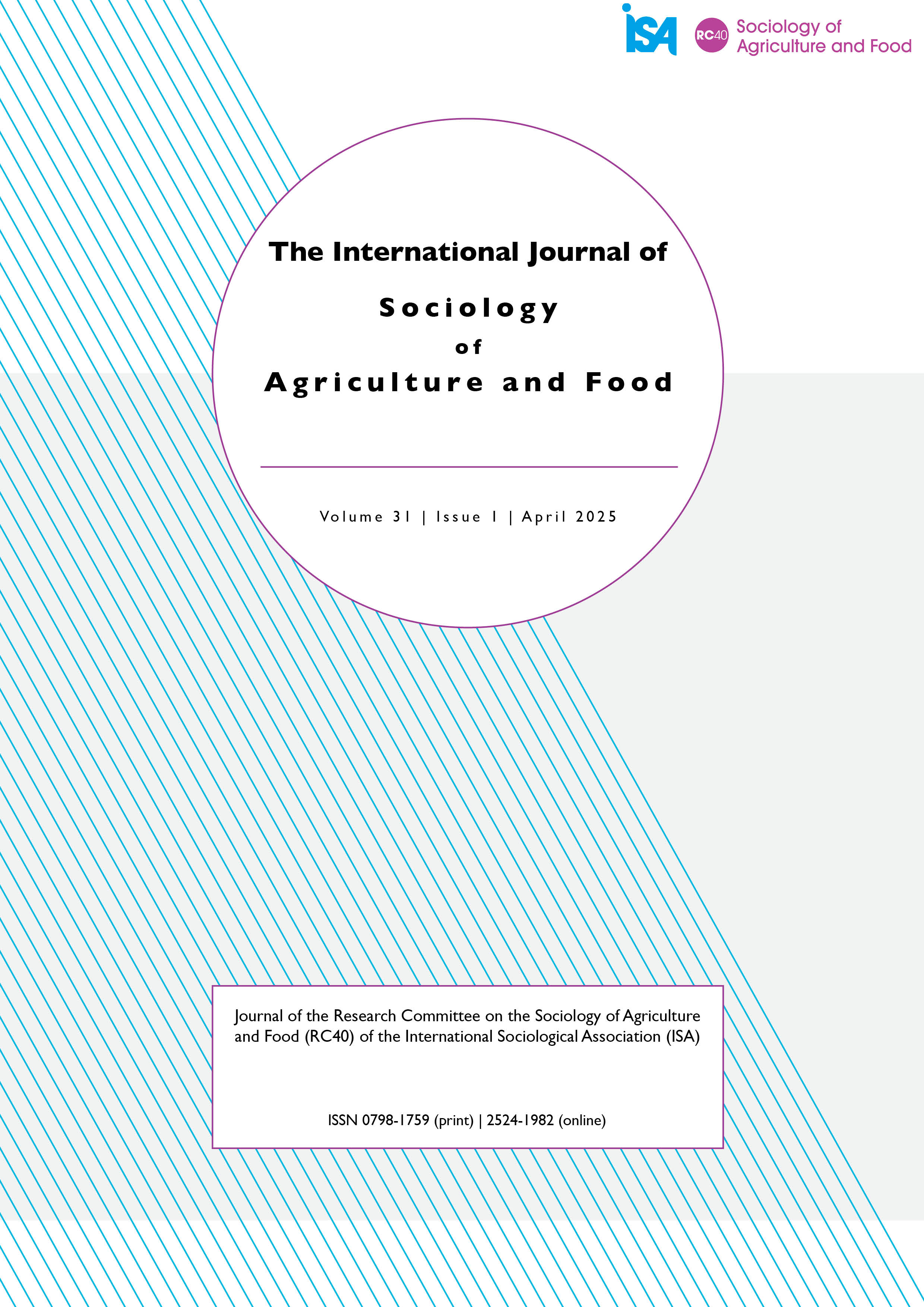The Chef and the Supplier The Role of the Supply Chain in Fine Dining Creativity
##plugins.themes.bootstrap3.article.main##
##plugins.themes.bootstrap3.article.sidebar##
Abstract
This article studies the relationship between culinary creativity in fine dining restaurants and the supply chain that supports them. Fine dining has experienced a renaissance in recent decades, with chefs pushing the boundaries of culinary innovation. However, little attention has been given to the pivotal role that suppliers play in this creative process. Based on the exploration of four case studies of Michelin-starred restaurants in Denmark, the paper uncovers the ways in which the supply chain influences the dynamics of high-end restaurants, proposing a social-material perspective on culinary creativity. Results show how sourcing practices impact fine dining creativity, and highlight the role of nature and quality as the foundations of the relationships between chefs and suppliers. This research innovatively sheds light on the behind-the-scenes processes that drive fine dining and shows how different restaurants think differently about the role of suppliers in the creative process. The strategies involve more traditional chef-centred approaches to culinary creativity, as well as ambitions to become self-sufficient. Results also show that the restaurants put the farmers first, seeing the supply chain and the food system as central to culinary creativity. We argue that these approaches seem to be essential to the development of more sustainable forms of Michelin restaurants.
How to Cite
##plugins.themes.bootstrap3.article.details##
Demark, food tourism, gastronomy, menu design, Michelin, regional development, sustainability
Aubke, F. (2014). Creative hot spots: A network analysis of German Michelin‐starred chefs. Creativity and Innovation Management, 23(1), 3-14.
Batat, W. (2020). Pillars of sustainable food experiences in the luxury gastronomy sector: A qualitative exploration of Michelin-starred chefs’ motivations. Journal of Retailing and Consumer Services, 57, 102255.
Batat, W. (2021). The role of luxury gastronomy in culinary tourism: An ethnographic study of Michelin‐Starred restaurants in France. International Journal of Tourism Research, 23(2), 150-163.
Bertella, G. (2023). Telling the story of a sustainable business model in Arctic luxury food tourism. Journal of Gastronomy and Tourism, 7(3), 135-147.
Fusté-Forné, F., & Leer, J. (2023). Food at the Edge of the World: Gastronomy marketing in Tórshavn (Faroe Islands). Shima, 17(1), 229-247.
Fusté-Forné, F., & Noguer-Juncà, E. (2023). Designing Michelin-starred menus from the perspective of chefs: Is the presence of local food worth a trip?. International Journal of Food Design, 1-17.
Gössling, S., & Hall, C. M. (2021). The sustainable chef: The environment in culinary arts, restaurants, and hospitality. Routledge.
Gyimóthy, S. (2018). The reinvention of terroir in Danish food place promotion. In J. Manniche and B. Saether (Eds.), Nordic Food Transitions (pp.100-116). Routledge.
Hjalager, A. M., & Richards, G. (2003). Tourism and gastronomy. Routledge.
Hvidtfeldt, D. Musical participation in studies of creativity. Qualitative Studies, 8(1), 314-333.
Johnston, J., & Baumann, S. (2014). Foodies: Democracy and distinction in the gourmet foodscape. Routledge.
Krogager, S. G. S., & Leer, J. (2022). Transgressive food practices on Instagram: The case of guldkroen in Copenhagen. In E. Contois and Z. Kish (Eds.), Food Instagram. Identity, Influence and Negotiation. University of Illinois Press.
Leschziner, V. (2015). At the chef's table: Culinary creativity in elite restaurants. Stanford University Press.
Leer, J. (2016). The rise and fall of the New Nordic Cuisine. Journal of Aesthetics and Culture, 8(1), 33494.
Leer, J. (2021). Porridge bars, nordic craft beer, and hipster families in the welfare state. In F. Parasecoli and M. Halawa (Eds.), Global Brooklyn: Designing Food Experiences in World. Bloomsbury.
Madeira, A., Palrão, T., Mendes, A. S., & Ottenbacher, M. C. (2022). The culinary creative process of Michelin Star chefs. Tourism Recreation Research, 47(3), 258-276.
Michelin Guide (2023). https://guide.michelin.com
Müller, A. R., & Leer, J. (2018). Mainstreaming New Nordic Cuisine?. In M. Phillipov and K. Kirkwood (Eds.), Alternative Food Politics: From the Margins to the Mainstream. Routledge.
Noguer-Juncà, E., & Fusté-Forné, F. (2022). Marketing environmental responsibility through “green” menus. Journal of Foodservice Business Research, 1-10.
Orea-Giner, A., Fusté-Forné, F., & Todd, L. (2024). The origin story: behind the scenes of food festivals. Event Management.
Phillipov, M., & Goodman, M. K. (2017). The celebrification of farmers: celebrity and the new politics of farming. Celebrity Studies, 8(2), 346-350.
Roy, H. (2016). The role of local food in restaurants: a comparison between restaurants and chefs in Vancouver, Canada and Christchurch, New Zealand. University of Canterbury, New Zealand.
Redzepi, R. (2010). Noma: Time and Place in Nordic Cuisine. Phaidon.
Ren, C., & Fusté-Forné, F. (2023). Food, national identity and tourism in Greenland. Food, Culture and Society, 1-25.
Roy, H., Hall, C. M., & Ballantine, P. W. (2017). Trust in local food networks: The role of trust among tourism stakeholders and their impacts in purchasing decisions. Journal of Destination Marketing & Management, 6(4), 309-317.
Skårup, B. (2013). The new Nordic diet and Danish food culture. In P. Lysaght (Ed.) The return of traditional food (pp.33-42). Lund University.
Tanggaard, L. (2015). The creative pathways of everyday life. The Journal of Creative Behavior, 49(3), 181-193.
Vargas-Sánchez, A., & López-Guzmán, T. (2022). Creative process and culinary experiences in Michelin-starred restaurants. Journal of Culinary Science and Technology, 20(2), 97-116.

This work is licensed under a Creative Commons Attribution 4.0 International License.
CC BY 4.0 https://creativecommons.org/licenses/by/2.0/
You are free to:
Share — copy and redistribute the material in any medium or format
Adapt — remix, transform, and build upon the material for any purpose, even commercially.
This license is acceptable for Free Cultural Works.
The licensor cannot revoke these freedoms as long as you follow the license terms.
Under the following terms:
Attribution — You must give appropriate credit, provide a link to the license, and indicate if changes were made. You may do so in any reasonable manner, but not in any way that suggests the licensor endorses you or your use.
No additional restrictions — You may not apply legal terms or technological measures that legally restrict others from doing anything the license permits.

 https://orcid.org/0000-0002-3800-9284
https://orcid.org/0000-0002-3800-9284